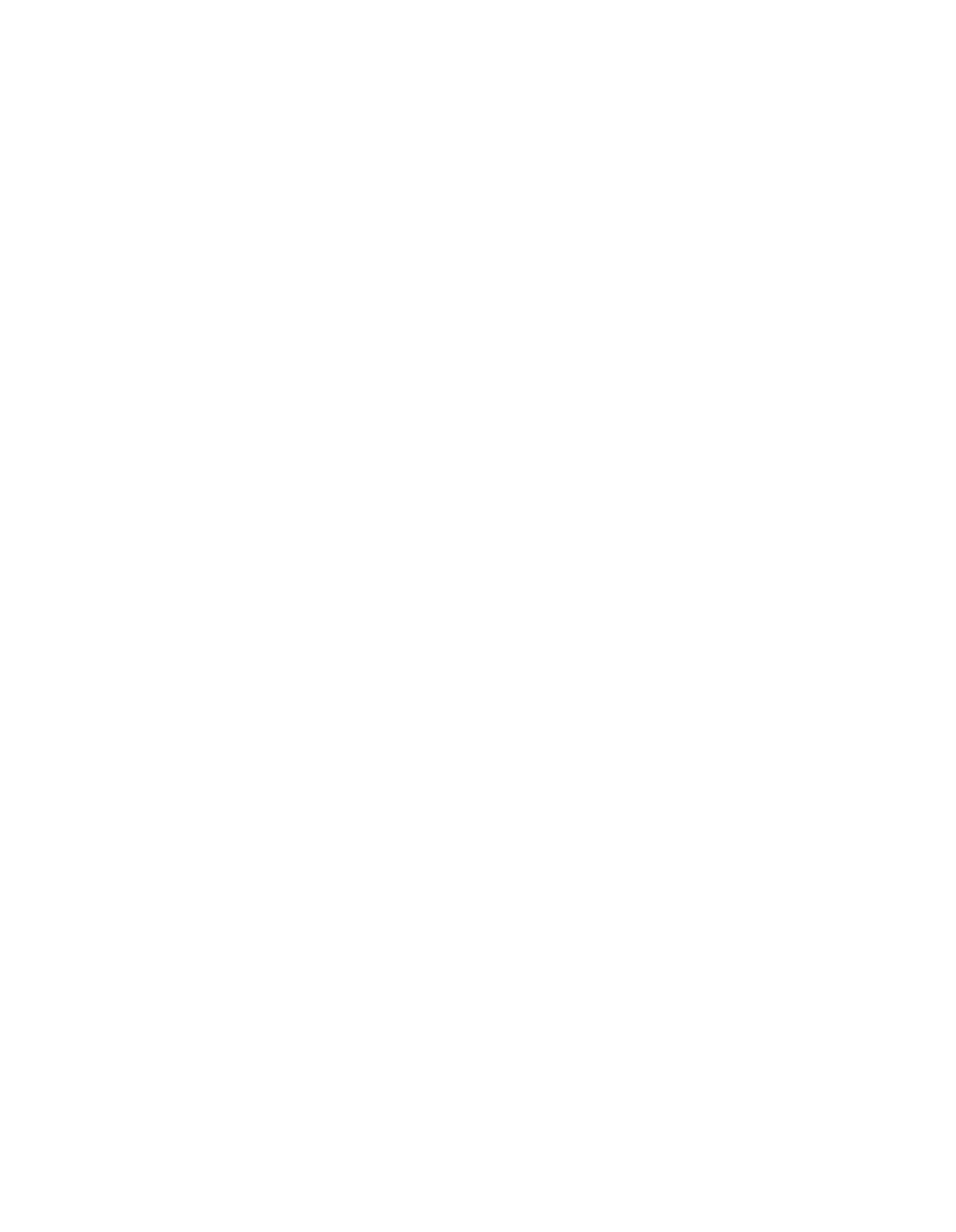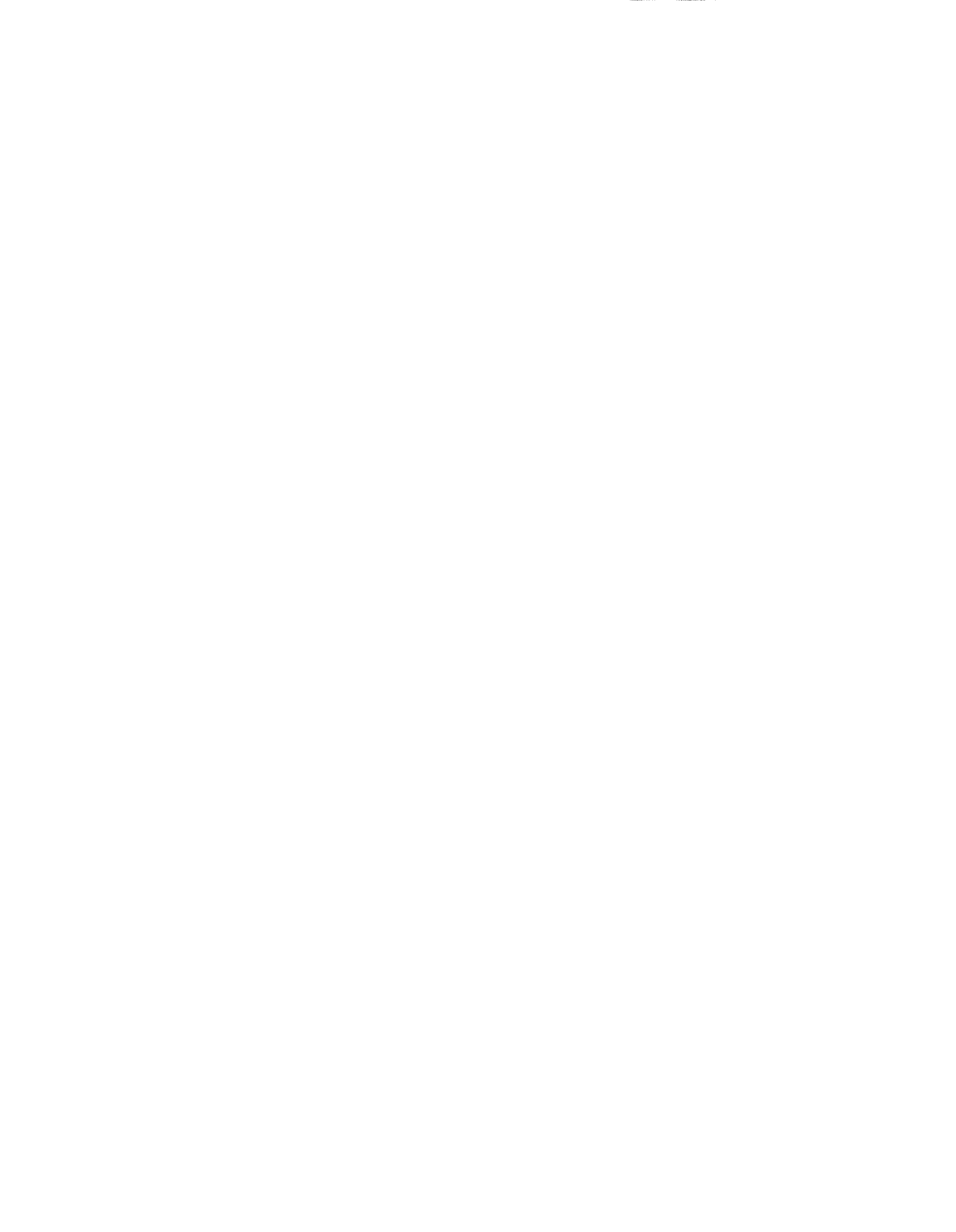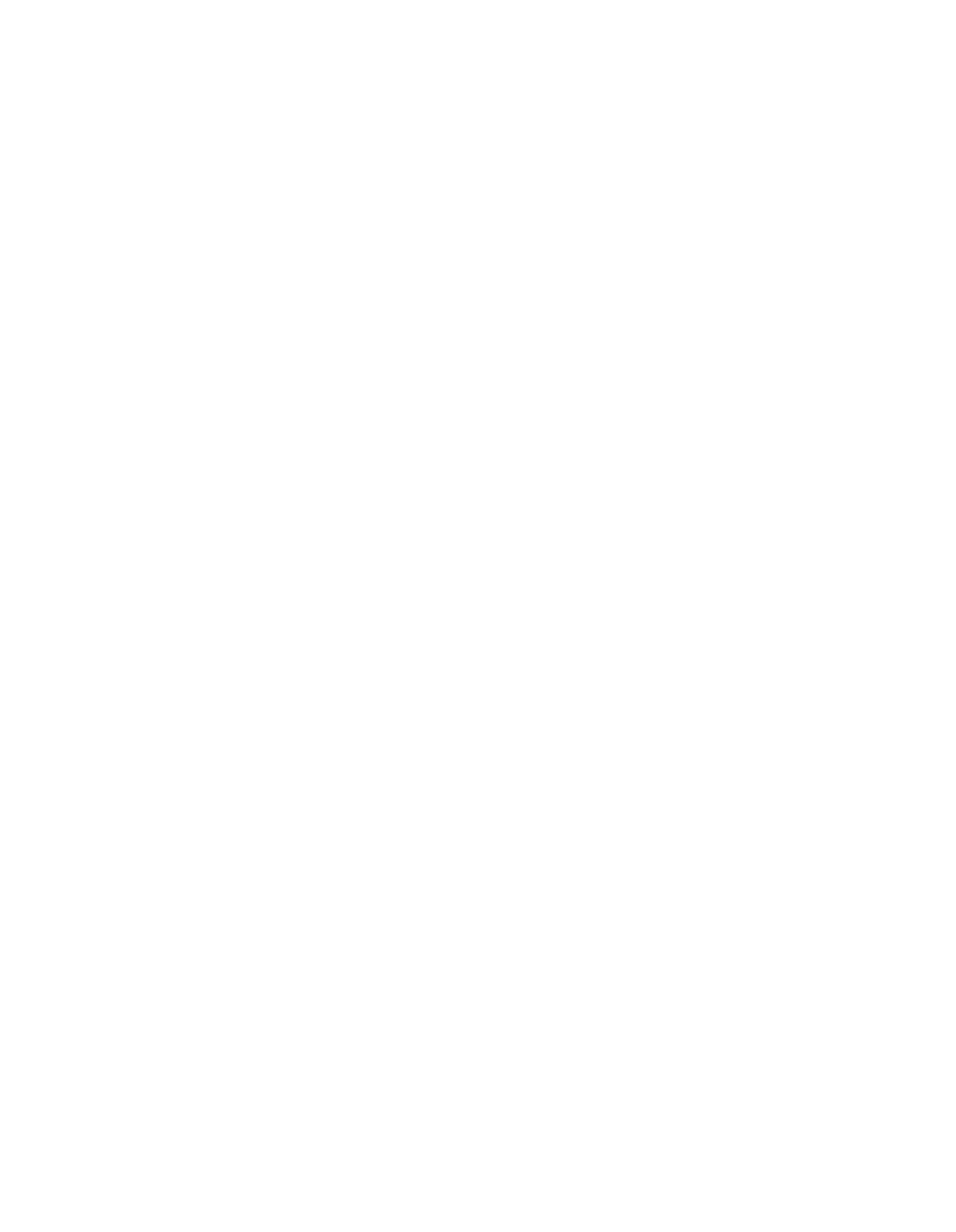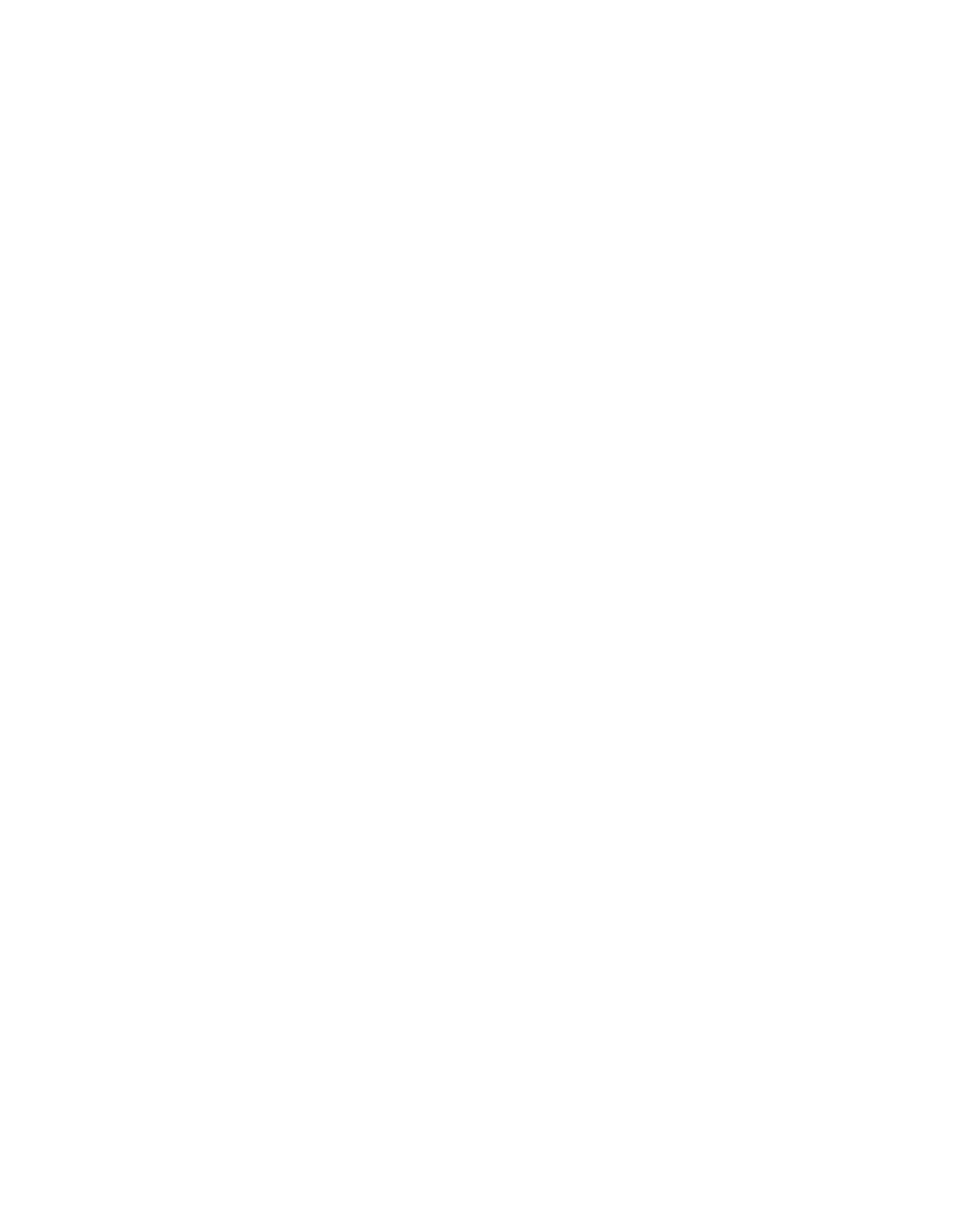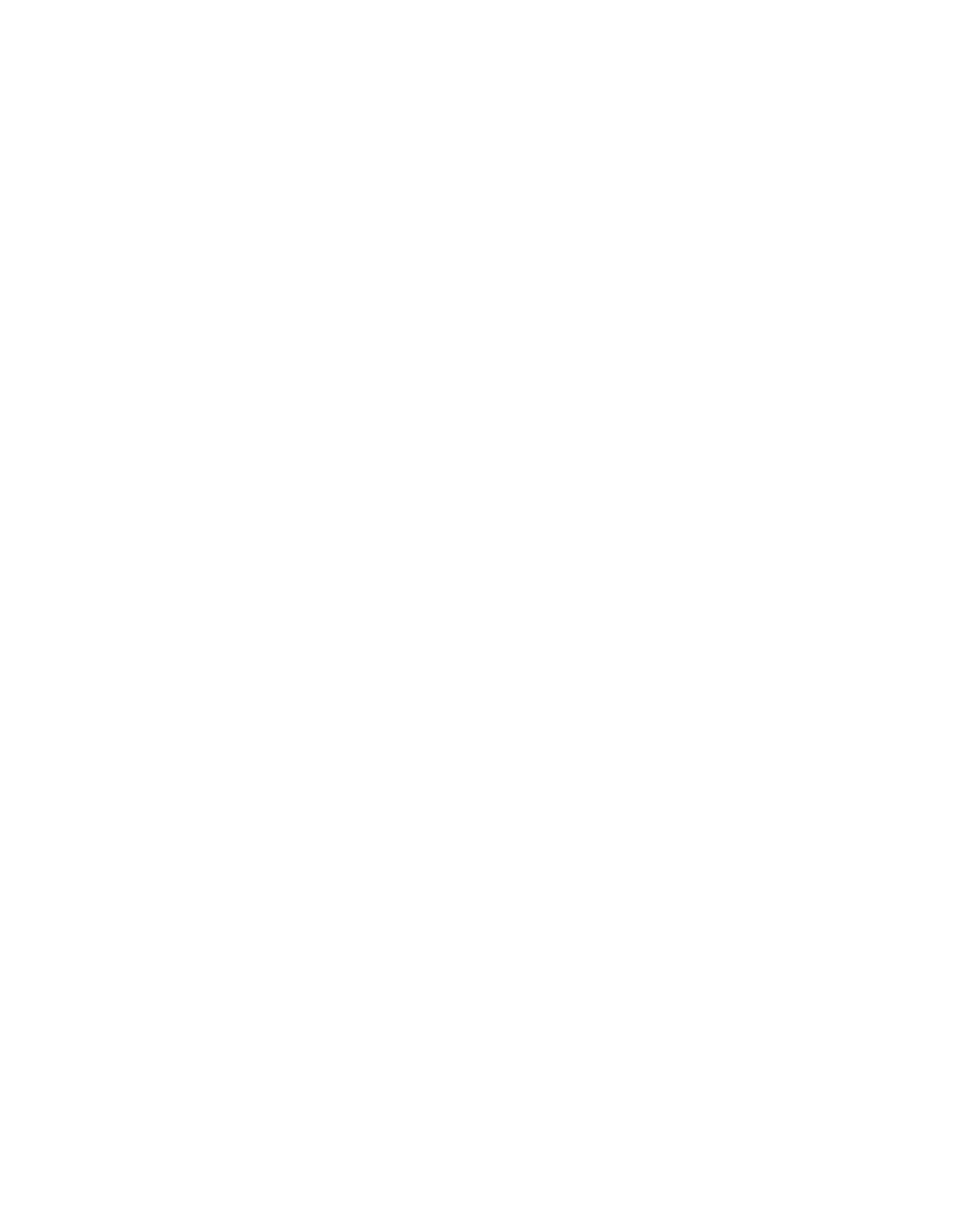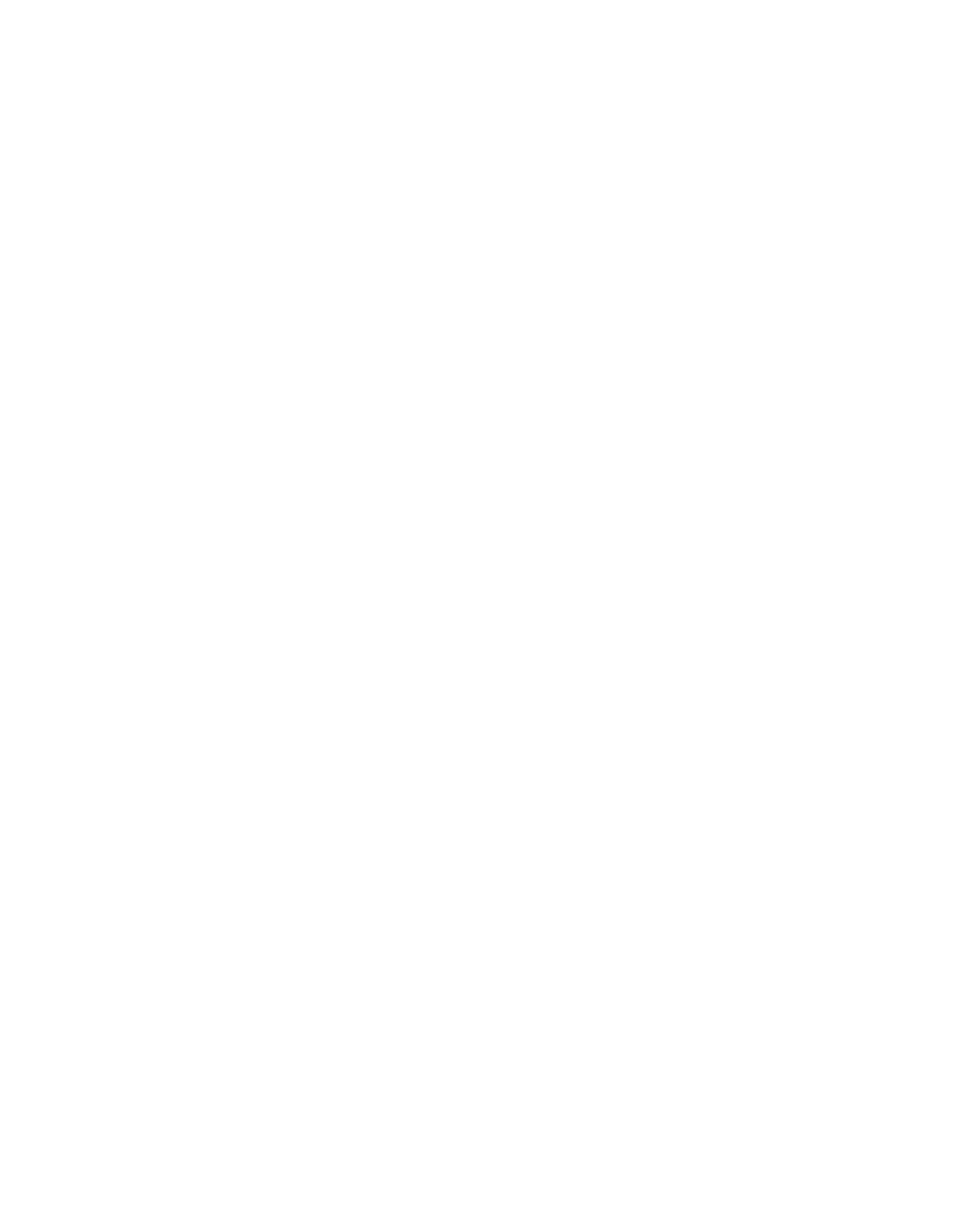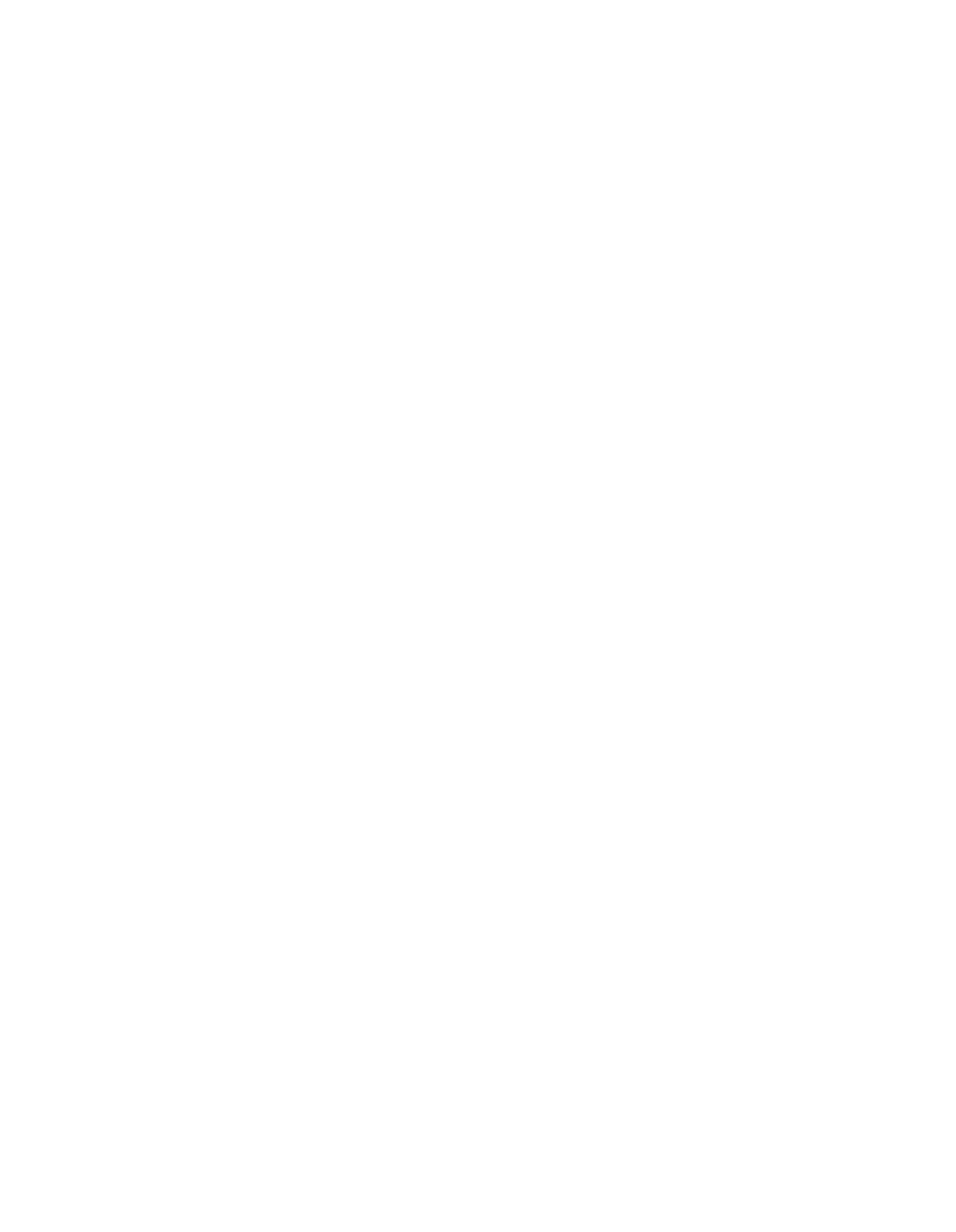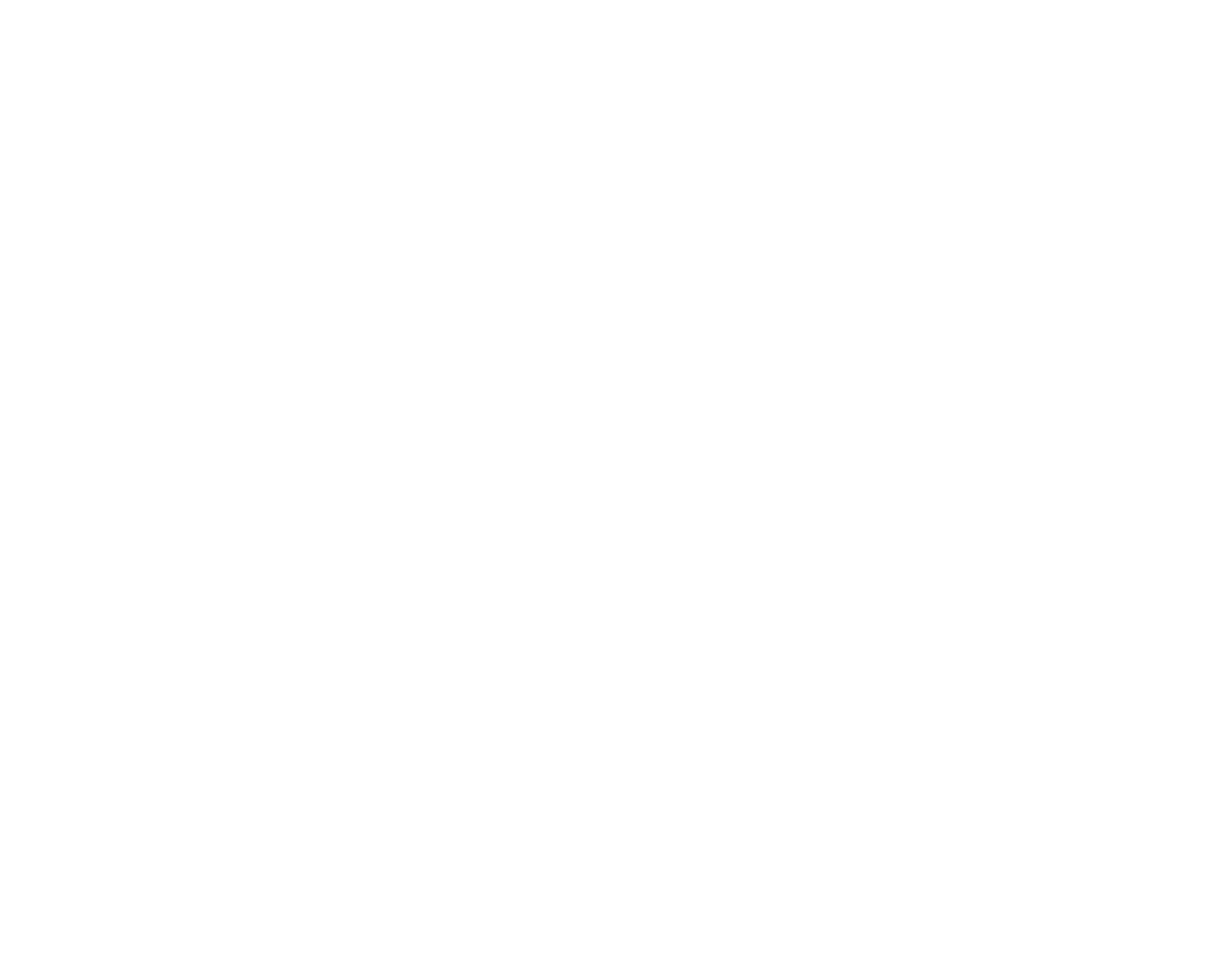CLERK’S OFFICE
NOV
052004
STATE OF ILLINOIS
Pollution Control Board
IN THE MATTER OF:
MAXIMUM SETBACK ZONES
35
Iii. Adm.
Code 618
Dorothy Gunn, Clerk
General Counsel
Illinois Pollution Control Board
Illinois Dept. ofNatural Resources
James R. Thompson Center
One Natural Resources Way
100 W. Randolph, Suite 11-500
Springfield, Illinois 62702-1271
Chicago, Illinois
60601
Matt Dunn
Environmental Bureau Chief
Office ofthe Attorney General
James R. Thompson Center
100 W. Randolph,
12th
Floor
Chicago, Illinois 60601
PLEASE TAKE NOTICE that I have today filed with the Office ofthe
Clerk of the
Illinois Pollution Control Board the Illinois Environmental Protection Agency’s (“Illinois EPA’)
Motion for Acceptance, Appearance ofAttorneys, Statement ofReasons, and the Proposed
Regulations a copy ofeach ofwhich is herewith served upon you.
ILLINOIS ENVIRONMENTAL
PROTECTION AGENCY
B~~~tJt~f
~A~
Kimberly A
Geving
Assistant Counsel
Division of Legal Counsel
DATE:
November
3,
2004
1021
North Grand Avenue East
P.O. Box 19276
Springfield, Illinois
62794-9276
(217)782-5544
BEFORE THE ILLINOIS POLLUTION CONTROL BOARD
RQ4-
)
Rulemaking-Public Water Supplies
)
)
NOTICE
THIS FILING SUBMITTED ON RECYCLED PAPER
Respectfully submitted,
ILLINOIS ENVIRONMENTAL
PROTECTION AGENCY
By:
44i~t.96~~
Renee Cip
o
Director
DATE:
November
3,
2004
1021
North Grand Avenue East
P.O. Box
19276
Springfield, Illinois
62794-9276
(217)782-3397
RECE~V~D~
CLERK’S OFRCE
-
NOV05
20~4
BEFORE THE ILLINOIS POLLUTION CONTROL BOARD
STATE
OF
ILLNOIS
Pollution
Contro’ E~oarc~
INTHEMATTEROF:
)
RO4~~
MAXIMUM SETBACK ZONES
)
Rulemaking-Public Water Supplies
35111. Adm. Code 618
)
)
MOTION FOR ACCEPTANCE
NOW COMES the
Illinois Environmental Protection Agency (“illinois EPA”)
and, pursuant to 35
Ill. Adm.
Code 102.202, moves the Illinois
Pollution Control Board
(“Board”) to
accept the Illinois EPA proposal forhearing.
This regulatory proposal
includes:
1) the Statement ofReasons and 2) the proposed regulations.
THIS FILING SUBMITTED ON RECYCLED PAPER
R
~
C
E i
~ D
CLERK’S OFFUE
BEFORE THE ILLiNOIS POLLUTION
CONTROL BOARD
NOV 052004
IN THE MATTER OF:
)
RQ4~i)
~(
PoUt~ Control Boa rd
MAXIMUM SETBACK ZONES
)
Rulemaking-Public Water Supplies
35 III. Adm. Code 618
)
)
APPEARANCE
The undersigned, as one ofits attorneys, hereby enters her entry ofAppearance on
behalfofthe Illinois Environmental Protection Agency.
ILLINOIS ENVIRONMENTAL
PROTECTION AGENCY
By:__
Assistant Counsel
Division ofLegal Counsel
DATE:
November
3,
2004
1021
North Grand Avenue East
-
P.O. Box
19276
Springfield, Illinois 62794-9276
(217)782-5544
THIS FILING SUBMITTED
ON RECYCLED
PAPER
REC~VED
CLERK’S OFFICE
NOV
05
2004
BEFORE THE ILLINOIS POLLUTION CONTROL BO~~rE
OF ILLINOIS
Pollution COntrol Board
IN
THE MATTER OF:
)
ü~-~
RO4~
-
MAXIMUM SETBACK ZONES
)
Rulemaking-Public Water Supplies
35
Ill. Adm. Code 618
)
)
-
APPEARANCE
The undersigned, as one of its attorneys, hereby enters her entry ofAppearance on
behalf ofthe Illinois Environmental Protection Agency.
ILLINOIS ENVIRONMENTAL
PROTECTION AGENCY
By:
~A~L~J
~J4~’t~
Stepfi~nie
Flowers
Assistant Counsel
Division ofLegal
Counsel
DATE:
November
3,
2004
1021 North Grand Avenue East
-
P.O.
Box
19276
Springfield, Illinois
62794-9276
(217)782-5544
-
THIS FILING SUBMITTED ON RECYCLED PAPER
~ECE~VED
CLERK’.S. OFFICE
BEFORE THE ILLINOIS POLLUTION CONTROL BOARDNO’/
052004
STATE OF
IL
LI ~~OI5
IN THE MATTER OF:
)
Pollution Control t~oard
MAXIMUM SETBACK ZONES
)
R,Q4~
35
Ill. Adm.
Code
618
)
(Rulemaking- Public Water Supplies)
)
STATEMENT OF REASONS
The
Illinois
Environmental
Protection
Agency
(Illinois
EPA)
hereby
submits
this
Statement of Reasons, under Section
27 of the Illinois
Environmental Protection Act
(Act) (415
ILCS
5/27)
and
35
Il.
Adm.
Code
§
102.121(b) in
support of these proposed regulations.
On
March 22, 2004, the City ofMarquette Heights, located in Tazewell County, adopted
a
resolution
requesting the Illinois EPA to propose a regulation to increase the setback zone of the Marquette
Heights community water supply (CWS).
The Illinois
EPA proposes these rules
in
response to
the need to
expand the setback zone protection for the highly vulnerable groundwater serving the
Marquette Heights CWS
wells.
Thus,
the Illinois EPA has developed
this proposal
in response
to this statement and the need to protect the groundwater supplied to Marquette Heights residents
as drinking water.
Under
Section
14.3(d) of the Act
(415
ILCS
5/14.3(d)),
the Illinois
EPA, after written
notice
to
the
appropriate
county
and
municipality,
has the
authority
to
propose
a
maximum
setback zone proposal
to
the Illinois
Pollution
Control Board
(Board).
The
Illinois
EPA
can
develop such a proposal based upon the following from Section
14.3(d) ofthe Act:
Such proposal
shall be
based
upon
all
reasonably available hydrogeologic
information,
include
the justification for expanding the zone of wellhead protection,
and specify the
boundaries of such zone,
no
portion of which
shall be
in
excess of 1,000
feet from the
welihead.
Such
justification
shall
include
the need to
protect
a
sole
source
of public
water supply or a highly vulnerable source ofgroundwater, or an Agency finding that the
presence ofpotential primary or potential secondary sources or potential routes represents
a significant hazard to
the public health or the environment.
The
Illinois
Groundwater
Protection
Act
(IGPA)
(415
ILCS
55/1),
and
related
amendments to
the
Act,
were
enacted in
September
1987.
Section
14.2
of the Act
(415
ILCS
5/14.2)
establishes minimum setback zones of 200
or 400
feet for CWS
wells.
New
potential
primary
sources,
new
potential
routes,
and
new
potential
secondary
sources,
as
defined
in
Sections 3.345,
3.350 and
3.355
of the Act (415 ILCS
5/
3.345,
3.350
and
3.355),
respectively,
are prohibited within these areas.
Section
14.3 ofthe Act (415 ILCS
5/14.3) provides
additional
protection for CWS wells by authorizing either the county or municipality served by a CWS well
or the Board to establish a maximum setback zone ofup to
1,000
feet from the wellhead.
Under
Section
14.3(e)
of the
Act
(415 ILCS
5/14.3),
no
new potential primary sources can.be located
within a maximum setback zone.
Section
14.3
of the
Act
provides
the
authority
to
the
Board
and
to
counties
~nd
municipalities served byCWS wells to
establish maximum setback zones.
However, the Illinois
EPA is required to approve the adequacy of a demonstration that the “lateral area ofinfluence”
is
larger than the minimum setback zone before adoption ofmaximum setback zones.
The Illinois
EPA was required to
develop procedures to
make such determinations using pumping tests and
estimation
procedures.
The
Illinois
EPA
developed
and
adopted
35
Iii.
Adm.
Code
671,
Maximum Setback Zone Rules for Community Water Supply
Wells, which
details the technical
criteria for determining the
lateral area of influence (LAI).
Subpart B ofPart
671
sets
forth the
procedures for determining the LAI ofwells under normal operating conditions.
Section
14.4 of the Act
(415 ILCS
5/14.4)
also requires the development of technology
control regulations
that
apply to
certain activities
located within
the setback zone or regulated
recharge area ofpotable
water supply wells.
Activities regulated under Section
14.4 of the Act
include:
2
1.
land
filling,
land treating,
surface
impounding
or piling
of special
waste
and
other
wastes which could cause contamination of groundwater and which
are generated on
the site, other than hazardous,
livestock
and
landscape waste,
and
construction
and
demolition debris;
2.
storage of special waste
in
an
underground storage tank for which
federal
regulatory
requirements forthe protection ofgroundwater are not
applicable;
3.
storage and related handling ofpesticides and fertilizers at a facility for the purpose of
commercial application;
4.
storage and related handling ofroad oils
and de-icing agents at a central location; and
5.
storage and related handling of pesticides
and
fertilizers
at a
central location for the
purpose ofdistribution to retail sales outlets. (415 ILCS
5/14.3)
The Board adopted these technology
control regulations for Existing and Ne~iActivities
within
Setback
Zones
and
Regulated
Recharge
Areas
(35
III.
Adm.
Code
615
and
616)
(Technical
Standards)
on
December 6,
1991.
Those regulations
apply to
this new Part 618
and
are cross-referenced
in Section 618.200.
General Overview
After
significant negotiations between environmental groups, business groups,
and
local
government, the IGPA was proposed to the Illinois General Assembly and enacted in September
1987.
Under the
authority of the IGPA,
the
groundwater protection program
advanced
five
general principles that are relevant to
this proposal:
local involvement partnership between State
and
local
interests,
differential
protection
for
the
aquifer,
the
need
for
sound
technical
information,
and
a
preference
for prevention.
With
regard
to
these
principles,
the regional
protection
program
emphasized
local
involvement
where
information transfer,
education, and
advocacy were
accentuated over regulation.
Local
governments were
authorized, not mandated,
to
adopt
setback zone
ordinances
and
to
do
groundwater protection needs
assessments
under
Illinois EPA guidance.
3
As part of a
responsible
partnership between
State
and
local
governments,
the Illinois
EPA developed a well site survey program to
generate needed information for local
governments
to
use
in
adopting ordinances.
Upon request
from
smaller
local governments,
the Illinois
EPA
was authorized to do hazard reviews to help determine the need for local groundwater protection.
The
IGPA mandated
statewide
mapping
of “appropriate recharge
areas,”
and
after a two-year
period, authorized the Illinois EPA to
propose regulations for needed maximum setback zones in
instances where
local governments choose not to
act.
Section
17.2
of the
Act
(415
ILCS
5/1)
requires the
creation of Priority Groundwater
Protection
Planning
Regions.
These
Priority
Groundwater
Protection
Planning
Regions
and
associated
committees
were
established
based
on
identification of appropriate
recharge
area
mapping
conducted
by
the
Department
of Natural
Resources
(DNR)
as required
by
Section
7(b)(2)
of the
IGPA.
•The
DNR
published
the
“Potential
for
Aquifer
Recharge
in
Illinois
Appropriate
Recharge
Area
Map”
in
1990.
The Priority
Groundwater
Protection
Planning
Committees include
representative
from
counties
and
municipalities,
owners
and
operators
of
public
water supplies
utilizing
groundwater, and
members of the
general
public
interested
in
protecting
groundwater.
The
Illinois
EPA further refined the
general
public
representation to
include members from business, environmental, and agricultural interests.
The Central Regional Planning Committee (CRPC) was established in
1991.
The CRPC
is one of four priority groundwater protection planning regions
that have been established in the
•
State.
The
central
region
is
comprised
of
the
counties
of Mason,
Peoria,
Tazewell
and
Woodford.
The Marquette Heights CWS wells are located in Tazewell County.
4
Purpose and Effect ofthe Proposal
The purpose of this regulation
is
to
prevent
contamination of the groundwater used by
Marquette
Heights
CWS.
The
provisions
proposed
herein
will
reduce
the
potential
risk
of
contamination to the aquifer within the maximum setback zone utilized by the CWS
and thereby
increase the assurance of a safe and adequate source ofpotable water.
Facts Supporting the Proposal
The Illinois EPA has provided forreview
and consideration by the Board the facts, which
support
the adoption of maximum setback zones for the Marquette
Heights
CWS
wells.
The
following
subsection
contains
a
synopsis
of the
Illinois
EPA’s
methodology,
rationale,
and
conclusions underlying this regulatory package.
Delineation ofa Welihead Protection Area for Marquette Heights CWS Wells
The City of Marquette
Heights has CWS
wells
located in North Pekin.
It
is
estimated
that the average
daily pumpage from
the groundwater source of 240,900
gallons per day (gpd)
supplying about 3,200 persons directly.
The Illinois
EPA conducted
a
source water assessment pursuant
to
§
1453 of the
federal
Safe
Drinking
Water
Act
(SDWA)
for the
Marquette
Heights
CWS
wells.
This
assessment
evaluated the existing water quality, intrinsic geologic vulnerability, existing potential
sources of
groundwater contamination, and determined the overall
susceptibility ofthese wells based on the
combination ofthese factors.
Each ofthe wells is susceptible to groundwater contamination.
In addition, the Illinois EPA contracted with RAPPS Engineering and Applied Science to
develop
a
regional
groundwater
flow
model
for
the
Creve
Coeur
to
Pekin
area,
and
to
subsequently
delineate
the
recharge
areas
for
the
Marquette
Heights
wells.
This
more
sophisticated approach allowed for the determination of an
irregular
shaped maximum
setback
5
zone,
up
to
1,000
feet,
for
the
respective
wellheads
by
taking
into
account
the
regional
groundwater gradient
in
combination
with
the LAI,
and
other
pumping
stresses
in
the
area.
Recharge
area
modeling
was
conducted
to
be
consistent
with
35
Ill.
Adm.
Code
671.
Groundwater
flow modeling
was performed
to
evaluate the adequacy of protection afforded
to
resource
groundwater
by
the minimum
zones
established
for Marquette
Heights
CWS
wells.
This evaluation demonstrates that recharge is occurring beyond the minimum setback zones, and
that the wells are not adequately protected.
Regulatory Development and Public Notice
On
March
29,
2004,
the
Illinois
EPA
received
a
letter
from
the
Mayor of~Marquette
•
Heights with
an enclosed resolution requesting for us to develop this proposal.
After receipt of
this
letter and resolution the source water assessment
completed for Marquette Heights
on April
25,
2003
was evaluated to
determine the susceptibility/vulnerablity ofthe wells
to
groundwater
contamination.
The Illinois EPA can develop a maximum setback zone proposal based upon the
following from Section 14.3(d) ofthe Act (415 ILCS
5/14.3(d)):
Such
proposal
shall be
based
upon
all
reasonably available
hydrogeologic information,
include the
justification
for expanding the zone of wellhead
protection,
and
specify the
boundaries
of such zone, no
portion of which shall
be in
excess of 1,000
feet from
the
wellhead.
Such justification
shall
include
the
need
to
protect
a
sole
source of public
water supply or a highly vulnerable source ofgroundwater, or an Agency finding that the
presence ofpotential primary or potential secondary sources orpotential routes represents
a significant hazard to the public health or the environment. (Emphasis added)
Evaluation conducted by the Illinois EPA concludes that the Marquette Heights CWS
wells are a highly vulnerable source of groundwater.
In addition, the Illinois EPA issued an
advisory ofgroundwater contamination hazard forNorth Pekin and Marquette Heights on July
25,
1990 pursuant to Section
17.1(g) of the Act
(415 ILCS
5/17.1(g)).
This advisory was i~sued
due
to the presence ofpotential
sources ofgroundwater contamination that represented
a
6
significant hazard to public
health and the environment.
Therefore, this proposal meets the
requirements for justification, emphasized above, under Section 14.3(g) ofthe Act.
Further,
pursuant to Section
14.3(d) ofthe Act, the Illinois EPA provided notice by certified mail to the
City ofMarquette Heights, Village ofNorth Pekin, the Tazewell County Zoning Office, and the
Central Priority Groundwater Protection Planning Committee on June 21,
2004.
On July 7,
2004, the Central PriorityPlanning Committee included discussion of the proposed Marquette
Heights maximum setback zone as one ofthe agenda items fordiscussion.
The Illinois EPA
presented the background on the proposal and asked for the committee’s input.
A couple of
general questions were asked and
answered to their satisfaction.
The regional committee
•
understood the need for this protective measure and raised no objections to proceeding with the
proposal.
The IGPA (415 ILCS
55/5),
established the Interagency Coordinating Committee on
Groundwater (ICCG). The Illinois EPA chairs the ICCG.
The ICCG is comprised of: the Illinois
Department ofPublic Health (IDPH); Department of Natural Resources (DNR); Department of
Agriculture (DOA); Illinpis State Fire Marshall (ISFM); Department ofCommerce
and
Economic Opportunity (DCEO), and Illinois Emergency Management Agency
(IEMA).
The
IGPA also establishes the Groundwater Advisory Council (GAC).
The GAC is comprised of
environmental, business, public water supply,
county and municipal government, regional
planning, and water well driller interest group representatives.
The ICCG and GAC work
jointly, and the Illinois EPA is the liaison between the ICCG and GAC.
This state level
coordinating committee and advisory council also works with the four priority groundwater
protection-planning committees (415 ILCS 5/17.2) with diverse local
stakeholder representation.
A joint meeting ofthe ICCG and
GAC was held on July 27, 2004 to discuss, among under
7
issues, their input on the Marquette Heights maximum setback zone proposal.
Similar to
the
regional committee, the GAC understood the need for the proposal and raised no objections.
Pursuant
to Section
14.3 (d) of the Act,
the Illinois EPA “...mayproceed with filing such
a proposal unless the county or municipality, within 30 days ofthe receipt ofthe written notice,
files a request for a conference with the Agency.
The Illinois EPA did not receive any
comments, within the 30-day period prescribed by Section 14.3(d) ofthe Act, from
Cityof
Marquette Heights, Village ofNorth Pekin, or the Tazewell County Zoning Office in regard to
the written notice provided to them by the Illinois EPA on June
25,
2004.
Accordingly, we are
proceeding with this proposal to the Board.
-
The Illinois EPA’s Proposal
The following is a section-by-section summary ofthe Illinois EPA’s proposal.
Subpart A General Maximum Setback Zones
This
Subpart establishes the general provisions associated with maximum setback zones
that are adopted by the Board.
-
.-
Section6l8.l00Purpose
-
This
Section
defines
the
purpose
of
maximum
setback
zone
regulations
delineated
pursuant to Section
14.3 ofthe Act (415 ILCS
5/14.3).
Section 618.105 Definitions
The illinois EPA has proposed general definitions for maximum setback zones within the
State
of illinois.
The definitions proposed
are
derived
from
the Act,
IGPA,
and
other Board
regulations.
.•
Subpart B Marquette Heights CWS Well Maximum Setback Zones
-
8
This Subpart details the specific requirements that are being proposed to apply within the
delineated Marquette Heights CWS well maximum setback zones.
Section 618.200 Purpose
The Purpose section describes the standards and requirements being proposed for the
protection ofthe Marquette
Heights CWS
wells.
Section 618.205
1,000 Foot Maximum Setback Zone Prohibition
Section
6 18.205
describes
the
requirement
that
new
potential
primary
sources
are
prohibited
within the maximum setback zone ofthe Marquette Heights
CWS wells
in Appendix
A of this Part.
This requirement is based on Section
14.3 ofthe Act.
-
Section 618. Subpart B.Appendix A
Appendix A details a map of the Marquette Heights CWS wells (50280 and 50281),
-
maximum setback zoneboundaries, roads, and propertyboundaries and associated identification
numbers.
The local property boundaries and
associated identification numbers were obtained
from the county assessor’s office.
In addition, to assist with implementation, ease of
understanding ofthe area being regulated, and conformance with local zoning, Illinois EPA has
annotated the map with the properties located wholly or partiallywithin the proposed maximum
setback zone.
Enforceability
•
A violation of a rule or
standard
set
out
in of 35
Ill.
Adm.
Code
618
Subpart
B,
once
adopted by the Board, would
constitute
a violation of the Act
(415
ILCS
5/14.3
and
415
ILCS
5/18) p~Se.
Where the violation of the Part 618 maximum setback zone also causes,
threatens,
or
allows
groundwater
pollution,
the
infringement
would
constitute
a
violation
-of
the
9
Groundwater Quality
Standards
(35
Ill.
Adm.
Code
620) and
Section
12
of the Act
(415
ILCS
5/12 (1996)).
Agency Witness and Synopsis ofTestimony
The Agency will provide one witness in this proceeding:
Rick Cobb.
Mr.
Cobb will
provide an overview ofthe background necessitating this proposal
as well as the regulatory
development process and support for the entire proposal.
The Agency will submit written testimony in advance ofthe hearings pursuant to any
hearing officer order that follows this proposal.
The Agency respectfully requests that the Board
accept Mr. Cobb’s testimony into the record as if read at hearing and allow him to briefly
•
summarize his testimony during the hearing.
The suggestion has streamlined several regulatory
hearings in the past and offers the Agency the opportunity to more fully respond to questions
(pre-filed or otherwise) during the information gathering process.
Technical Feasibility and Economical Reasonableness
The pollution
of groundwater
can
have
wide-ranging
economic
implications
to
local
communities.
Groundwater contamination can produce significant eôonomic
hardships for local
businesses and
communities,
including
the following:
devalued
real estate;
diminished
home
sales or commercial real estate
sales; loss to
the tax base; consulting
and
legal
fees; increased
operation
and maintenance
costs;
increased water rates for alternative water supplies
as well as
the cost of new equipment and
treatment; and remediation
costs
including site characterization,
feasibility
studies,
and
long-term
treatment
and
disposal
costs.
In
contrast,
establishing
a
maximum setback will reduce the likelihood of contamination, therebyreducing costs.
•
10
Conclusions
The Illinois
EPA’s
maximum
setback zone
rule proposal
is
consistent
with the
Illinois
EPA philosophy, as discussed early in
this document.
The Illinois EPA’s proposal forprotection
of groundwater in
this
rulemaking is
limited
to potential
sources of groundwater contamination
located within Marquette Heights CWS well maximum setback zones.
In summary, the Illinois EPA’s proposed regulations do the following:
expand the area of
applicability
for the
Board’s
existing
technical
standards;
and require the prohibition
of new
potential primary sources from locating within the maximum setback zone.
Promulgation of this proposal
is
necessary to protect the immediate recharge area ofthe
Marquette
Heights
CWS
wells
and
the
groundwater supplying
the City
of Marquette
Heights.
The proposed regulation is economically reasonable and technically
feasible.
The Illinois
EPA
respectfully requests the Board to adopt the Illinois EPA’s proposed regulation in
its entirety as
submitted.
-
-
-
Respectfully submitted,
ILLINOIS ENVIRONEMENTAL
PROTECTTON AGENCY
By:
________________________
I
Kimberl~’A.
Geving
(~)
Assistant’ Counsel
DATED:
November
3,
2004
1021
North Grand Avenue East
P.O. Box 19276
Springfield, Illinois
62794-9276
(217)782-5544
THIS FILING SUBMITTED ON
RECYCYLED
PAPER
11
REC~JVFD
CLERK’S OFFICE
ILLINOIS REGISTER
NOV
05
2004
STATE OF ILLINOIS
PoiluUon Control Board
ILLINOIS POLLUTION CONTROL BOARD
NOTICE OF PROPOSED RULES
1)
Heading of the Part:
Maximum Setback Zones.
2)
Code Citation:
35 Ill. Adm. Code 618.
3)
Section Numbers:
All.
Proposed Action:
new rule.
4)
Statutory Authority:
Implementing Section
14.3 and authorized by Section 27
ofthe Illinois
Environmental Protection Act
415
ILCS
5/14.3
and 27.
5)
Acomplete Description ofthe Subjects and Issues Involved:
Part 618 is a
new Part
that prescribes maximum setback zones that apply under 35
Ill.
Adm. Code Parts 615
and 616.
This new Part is necessary to ensure public
health, safety, and welfare;
to preserve the quality and quantity of
groundwater resources in order to ensure a safe and adequate water supply for
present and future generations; and to preserve groundwater resources
currently in use and those aquifers having a potential for future use as a public
water supply.
6)
Will this
proposed rule replace an emergency rule currently in effect?
No.
7)
Does this rulemaking contain an automatic repeal
date:
Yes
~No
8)
Does this proposed rule contain incorporations by reference?
Yes.
9)
Are there any other proposed rule(s) pending on this Part?
No.
10)
Statement ofStatewide Policy Objectives:
See number
5
above.
11)
Time, Place, and Manner in which interested persons may comment on this
proposed rulemaking:
To be determinedby the Pollution Control Board.
12)
Initial Regulatory Flexibility Analysis:
A)
Types ofsmall businesses, small municipalities and not for profit
corporations affected:
This rule will affect any small business, small
municipality, or not-for-profit corporation that is located within the
maximum setback zone and does any ofthe following:
land filling, land
treating, surface impounding or piling ofspecial waste and otherwastes
that could cause contamination of groundwaterwhen such wastes are
generated on the site (other than hazardous, livestock and landscape waste,
1
and construction and demolition debris); storing ofspecial waste in an
underground storage tank for which federal regulatory requirements for
the protection ofgroundwater are not applicable; storing and related
handling ofpesticides and
fertilizers at a facility forthe purpose of
commercial application; storing and related handling ofroad
oils and de-
icing agents at a central location; or storing and related handling of
pesticides and
fertilizers at a central location for the purpose of
distribution to retail sales outlets.
415
ILCS 5/14.3
Further, this rule will affect any small business, small municipality, or not-
for-profit corporation that proposes to locate a Potential Primary Source
(as defined in the regulation) within such zone after the effective date of
this regulation.
B)
Reporting, bookkeeping orother procedures required for compliance:
None under the newPart 618, but Parts 616
and 617, referenced in this
rule, do have reporting requirements.
-
C)
Types ofprofessional skills necessary for compliance:
Part 618 does not
necessarily require professional skills outside ofthe general knowledge of
a water supply operator or the owner and operator of a site that is a new
potential primary source.
However, Parts 616 and
617, referenced in this
rule, do require the use ofeither a Professional Engineer or Professional
Geologist.
13)
Regulatory Agenda on which this rulemaking was summarized:
July 2004
The full text ofthe Proposed Rule begins on the next page:
2
ILLINOIS REGISTER
ILLINOIS POLLUTION CONTROL BOARD
NOTICE OF PROPOSED RULES
TITLE 35:
ENVIRONMENTAL PROTECTION
SUBTITLE F:
PUBLIC WATER SUPPLIES
CHAPTER I:
POLLUTION CONTROL BOARD
PART 618
MAXIMUM SETBACK ZONES
SUBPART
A:
GENERAL
Section
618.100
Purpose
6 18.105
Definitions
SUBPART B:
MARQUETTE HEIGHTS’ MAXMUM
SETBACKZONE
Section
618.200.
PurposeS
6 18.205
1,000 Foot Maximum Setback Zone Prohibition
Appendix A
Boundary ofMarquette Heights’ Maximum Setback Zone
AUTHORITY:
Implementing
Section
14.3
and
authorized
by
Section
27
of
the
Illinois
Environmental Protection Act
415
ILCS 5/14.3
and 27.
-
SOURCE:
Proposed in R
_____
at _____Ill. Reg.
_____
,effective ________________________
SUBPART A:
GENERAL
Section 618.100
Purpose
This Part is established in the interest ofsecuring the public health, safety, and welfare; to
preserve the quality and quantity ofgroundwater resources in order to assure a safe and adequate
water supply for present and future generations; and to preserve groundwater resources currently
in use and those aquifers having a potential for futureuse as a public water supply.
Pursuant to
the authorityof Section
14.3 ofthe Illinois Environmental Protection Act (“Act”), 415 ILCS
5/1,
and 35
Ill. Adm. Code 671, the provisions ofthis Part apply to all properties located within the
maximum setback zone established under Section
14.3 ofthe Act and this regulation.
Section 618.105
Definitions
ILLINOIS REGISTER
ILLINOIS POLLUTION CONTROL BOARD
NOTICE OF PROPOSED RULES
Unless a different meaning of a word or term is clearfrom the context, the definitions ofwords
or terms in this Part are the same as those used in 35
Ill. Adm. Code 671, the Act, or the Illinois
Groundwater Protection Act 415
ILCS
55/1.
“Agency” means the Illinois Environmental Protection Agency.
“Board” means the Illinois Pollution Control Board.
“Facility” means
the buildings and all real property contiguous thereto, and the
equipment at a single location usedfor the conduct ofbusiness.
430
ILCS 45/3
“New Potential Primary Source” means:
a potentialprimary source which is not in
existence orfor which
construction has not commenced at its location as ofJanuary 1,
1988; or
a potentialprimary source which expands laterally beyond the
currentlypermitted boundary or,
~f
theprimary source is not
permitted, the boundary in existence as ofJanuary 1,
1988; or
a potentialprimarysource which is part ofa facility that undergoes major
-
reconstruction.
Such reconstruction shall be deemed to have takenplace
where thefixed capital cost ofthe new components constructedwithin
a 2-
year period exceed 50
ofthefixed capital cost ofa comparable entirely
newfacility.
(Section 3.345 ofthe Act)
“New Potential Route” means:
a potential route which is not in
existence orfor which
construction has not commencedat its location as ofJanuary
1,
1988; or
a potential route which
expands laterally beyond the currentlypermitted
boundary or,
~f
thepotential route is not permitted, the boundary in
•
existence as ofJanuary
1, 1988.
(Section 3.350 ofthe Act)
-
“New Potential Secondary Source” means:
ILLINOIS REGISTER
ILLINOIS POLLUTION CONTROL BOARD
NOTICE OF PROPOSED RULES
a potential secondary source which is not in existence orfor which
construction has not commenced at its location
as ofJuly 1,
1988; or
a potential secondary source which expands laterally beyond the currently
permitted boundary or,
~f
the secondary source is not pennitted,
the
boundary in existence as ofJuly 1,
1988, other than an
expansionfor
handling oflivestock waste orfor treating domestic wastewaters; or
a potentialsecondary source which
is part ofa facility that undergoes
major reconstruction.
Such reconstruction shall be deemed to have taken
place where thefixed capital cost of the new components constructed
within
a 2-yearperiod exceed 50
ofthefixed capital cost of a
comparable entirely newfacility
(Section 3.355 ofthe Act); and
A new potential secondary source excludes an agrichemical facility that
mod~fIes
on-site storage capacity such that the volume ofthepesticide
storage does not exceed 125
ofthe available capacity in existence on
April 1,
1990,
or the volume offertilizer storage does not exceed 150
of
the available capacity in
existence on April 1,
1990;provided that a
written endorsementfor an
agrichemicalfacility permit is in effect under
Section 39.4 of
the
Act and the maximumfeasible setback is maintained.
This on-site storage capacity includes mini-bulkpesticides, package
-
agyichemical storage areas, liquid or dryfertilizers,
and liquid or dry
pesticides.
(Section 14.2(g)(4) ofthe Act)
“Potential Primary Source” means
any unit at afacility or site not currently
subject to a removal or remedial action which:
is
utilizedfor the treatment, storage,
or disposal ofany hazardous
orspecial waste not generatedat the site; or
is
utilizedfor the disposal ofmunicipal waste not generated at the
site, other than landscape waste and construction and demolition
debris; or
is utilizedfor the landfihling, land treating,
surface impounding orpiling
ofany hazardous or special waste that is generated on
the site or a
other
sites owned,
controlled or operated by the sameperson; or
ILLINOIS REGISTER
-
ILLINOIS POLLUTION CONTROL BOARD
NOTICE OF PROPOSED RULES
stores or accumulates at any time more than
75,000 pounds above ground,
or more than
7,500 pounds below ground, ofany hazardous substances.
(Section 3.345 ofthe Act)
“Potential route” means
abandoned and improperly plugged wells ofall kinds,
drainage wells, all injection wells, including closed loop heatpump wells, and
any excavationfor the discovery, development orproduction ofstone,
sandor
gravel.
(Section 3.350 ofthe Act)
“Potential secondary source” means
any unit at afacility or a site not currently
subject to a removal or remedial action,
other than a potentialprimary source,
which:
-
is utilizedfor the landfilling, land treating, or surface impounding of
waste that is generated on the site or at other sites owned,
controlled or.
operated by the sameperson, other than livestockand landscape waste,
and construction and demolition debris; or
stores oraccumulates at any time more than
25,000 but not more than
75,000 pounds above ground, or more than 2,500 but not more than
7,500
pounds below ground, ofany hazardOus substances; or
-
stores or accumulates at any time more than 25,000 gallons above
ground, or more than 500 gallons
below ground, ofpetroleum,
including
crude oilor anyfraction thereofwhich is not otherwise spec~/Ically
listed
or designated as a hazardous substance; or
stores or accumulatespesticides, fertilizers,
or road oilsfor purposes of
commercial application orfor distribution to retail sales outlets; or
stores or accumulates at any time more than 50,000 pounds of any de-
icing agent; or
is utilizedfor handling livestockwaste orfor treating domestic
wastewaters other than privatesewage disposal systems as defined in
the
Private SewageDisposalLicensingAct.
(Section 3.3
55
ofthe Act)
-
“Setback zone” means
a geographic area, designatedpursuant to
the
Act,
containing a potable water supply well or a potentialsource orpotential route,
having a continuous boundary, and within which certain prohibitions or
ILLINOIS REGISTER
ILLINOIS POLLUTION CONTROL BOARD
NOTICE OF PROPOSED RULES
regulations are applicable in
order to protectgroundwaters.
(Section 3.450 ofthe
Act)
“Site” means
any location, place, tract ofland, andfacilities, including but not
limited to buildings, and improvements usedfor purposes subject to
regulation or
control by
the
Act or regulations thereunder.
(Section 3.460 ofthe Act)
“Unit” means
any device, mechanism, equzpment,
or area (exclusive ofland
utilized onlyfor agriculturalproduction)
.
This term includes secondary
containment structures and their contents at agrichemicalfacilities.
(Section
3.515
of the Act)
“Unit boundary” means a line at the land’s surface circumscribing the area on
which,
above which, or below which waste, pesticides,
fertilizers, road oils or de-
icing agents will be placed during the active life ofthe facility.
The space takeD
up by any liner, dike or other barrier designed to
contain waste, pesticides,
ferti1izer~,
road oils, or de-icing agents falls within the unit boundary.
SUBPART B:
MARQUETTE HEIGHTS’ MAXIMUM SETBACK ZONE
Section 618.200
Purpose
This Subpart prescribes maximum setback zone prohibitions
and the applicable technology
control regulations that apply under 35
Ill. Adm.
Code 615 and 616 in the interest ofsecuring the
public health, safety, and welfare; to preserve the quality and quantity ofgroundwater resources
in order to assure a safe and adequate water supply for present and
future generations; and to
preserve groundwater resources currently in use and those aquifers having a potential for future
use as a public water supply.
The provisions ofthis regulation apply to all properties located
within the maximum setback zone boundaries ofMarquette Heights:
a)
For new potential primary sources of groundwater contamination pursuant to
Section
14.3(d) ofthe Act; and
b)
For existing and new activities regulated under 35 Ill.
Adm. Code
615 and
616 for
agrichemical facilities regulated under
8 Ill. Adm. Code 257 or 77 Ill.
Adm. Code
830 located wholly or partially within the maximum setback zone boundaries
delineated in Section 618.Appendix A ofthis Part.
Section 618.205
1,000
Foot Maximum Setback Zone Prohibition
ILLINOIS REGISTER
ILLINOIS
POLLUTION CONTROL BOARD
NOTICE OF PROPOSED RULES
A prohibition is established for the location ofnew potential primary sources of groundwater
contamination within the Marquette Heights’ delineated
1,000 foot maximum setback zone
boundaries detailed in
Section 6l8.Appendix A ofthis Part.
Section
618.Appendix A:
Boundary ofMarquette Heights’ Maximum SetbackZone
Board Note:
A full-scale copy ofthis map is available forpublic inspection in the Board’s office
at the James R.
Thompson Center, 100 W. Randolph Street, Suite 11-500, Chicago, Illinois
60601.
WHOLLY
CONTAINED
102
111
115
21-011
27-039
7-037
38-018
27-049
.8-036
28-037
9-035
103
28-038
9-034
1-005
29-035
10-033
2-004
29-036
10-032
30-033
11-030-
106
30-034
12-029
68-007
31-031
12-028
69-006
31
-032
13-027
70-005
32-030
13-026
71-004
33-044
14-024
72-003
34-026
A-023
73-002
34-027
B-022
74-001
35-025
C-021
75-021
36-023
0-040
76-022
154-020
16-001
77-023
155-019
16-002
78-024
156-018
17-003
79-025
157-017
17-003
80-026
158-016
18-004
81-027
159-015
19-041
82-028
160-014
20-009
83-029
161-013
20-010
84-030
162-012
21-011
163-011
21-012
109
164-010
22-013
106-008
165-009
22-014
107-007
166-008
23-015
108-006
167-007
23-016
109-005
168-006
24-017
110-004
169-005
111-003
170-004
118
112-002
67-005
113-001
114
OutlotC-1
-006
114-019
0.56-008
OutIot
c-i
-007
115-020
2.02-002
116-021
2.02-003
119
117-022
2.27-007
1-001
118-023
2-002
119-022
3-003
120-025
4-004
121-026
PARTIALLY
CONTAINED
106
118
64-010
50-020
65-010
.
51-019
66-009
52-018
67-008
53-017
85-031
54-016
86-032
55-015
56-014
109
57-015
105-009
58-012
122-027
59-011
123-028
67-005
66-004
111
65-003
153-021
64-002
152-022
26-051
114A-009
115
8-010
6-038
6-039
104
25-042
1-008
120
103
15-002
3-003
14-00
1
102
119
36-016
5-005
37-017
6-006
22-010
7-007
8-008
10120-010
105
Park-001
-
200
100
0
200
400
600
Legend
•
Marquette
Heights
CWS
Wells
________
Marquette
Heights
Maximum
Setback
Zone
Pekin
Township
Platt
Map
SOURCE
tNFORMATION
Pekin
Township
Plait
Map
obtained
from
Tazewell
County
Assessors
Office.
Marquette
Heights
Community
Water
Supply
Wells
and
Maximum
Setback
Zone
Information
obtained
map
compiled
and
created
by
Illinois
EPA
Groundwater
Section
0
ILLINOIS
EPA
2004
SECTION
618.
SUBPART
B.
APPENDIX
A
MARQUETTE
HEIGHTS
MAXIMUM
SETBACK
ZONE
35 ILLINOIS ADMINISTRATIVE CODE
-
CH I
SUBTITLE F
TITLE
35:
ENVIRONMENTAL PROTECTION
SUBTITLE F:
PUBLIC WATER SUPPLIES
CHAPTER I:
POLLUTION CONTROL BOARD
PART 618
MAXIMUM SETBACK ZONES
SUBPART A:
GENERAL
Section
618.100
Prirpose
618.105
Definitions
SUBPART
B:
MARQUETTE HEIGHTS’
MAXIMUM SETBACK ZONE
Section
618.200
Purpose
-
6 18.205
1,000 Foot Maximum Setback Zone Prohibition
Appendix A
Boundary ofMarquette Heights’ Maximum Setback Zone
AUTHORITY:
Implementing
Section
14.3
and
authorized
by
Section
27
of
the
Illinois
Environmental Protection Act
415
ILCS 5/14.3
and 27.
.
SOURCE:
Proposed in R
_____
at
_____
Ill. Reg.
_____
,
effective
35 ILLINOIS ADMINISTRATIVE CODE
CH. I
SEC. 618.100
SUBTITLE F
SUBPART
A:
GENERAL
Section 618.100
Purpose
This Part is established in the interest ofsecuring the public health, safety, and welfare;
to
preserve the quality and quantity of groundwater resources in order to
assure a safe and adequate
water supply for present and future generations; and to preserve groundwater resources currently
in use and those aquifers having a potential for future use as a public water supply.
Pursuant to
the authority ofSection 14.3 ofthe Illinois Environmental Protection Act (“Act”), 415 ILCS
5/1,
and
35
Ill.
Adm.
Code 671, the provisions ofthis Part apply to all properties located within the
maximum setback zone established
under Section
14.3 ofthe Act and
this regulation.
35
ILLINOIS ADMINISTRATIVE CODE
CH. I
SEC. 618.105
SUBTITLE F
Section 618.105
Definitions
Unless a different meaning ofa word orterm
is clear from the context, the definitions of words
or terms in this Part arethe same as those used in 35 Ill.
Adm. Code 671, the Act, or the Illinois
Groundwater Protection Act
415
ILCS
55/1.
“Agency” means the Illinois Environmental Protection Agency.
“Board” means the Illinois Pollution Control Board.
“Facility” means
the buildings and all realproperty contiguous thereto, and the
equipment at a single location usedfor the conduct ofbusiness.
430
ILCS 45/3
“New Potential Primary Source” means:
a potentialprimary source which is not in existence orfor which
construction has not commenced at its location as ofJanuaiy
1,
1988; or
a potentialprimary source which expands laterally beyond the
currentlypermitted boundary or,
~f
theprimary source is not
permitted, the boundary in existence as ofJanuary
1,
1988; or
a potentialprimary source which
is part ofa facility that undergoes major
reconstruction.
Such reconstruction shall be deemed to have takenplace
where thefixed capital cost ofthe new cOmponents constructed within
a 2-
year period exceed 50
ofthefixed capital cost ofa comparable entirely
newfacility.
(Section 3.345 ofthe Act)
“New Potential Route” means:
a potential route which is not in existence orfor which
construction has not commenced at its location as ofJanuary
1,
1988; or
a potential route which expands laterally beyond the currentlypermitted
boundary or,
~f
the potential route is not permitted, the boundary in
-
existence as ofJanuary
1,
1988.
(Section 3.350 ofthe Act)
“New Potential Secondary Source” means:
35 ILLINOIS ADMINISTRATIVE CODE
CH. I
SEC. 618.105
SUBTITLE F
-
a potential secondary source which is
not in existence orfor which
construction has not commencedat its location
as ofJuly 1,
1988; or
a potential secondary source which expands laterally beyond the currently
permitted boundary or,
~f
the secondary source is not permitted, the
boundary in existence as ofJuly 1,
1988,
other than an
expansionfor
handling oflivestock waste orfor treating domestic wastewaters; or
a potentialsecondary source which
is part ofa facility that undergoes
majorreconstruction.
Such reconstruction shall be deemedto have taken
place where thefixed capital cost ofthe new components constructed
within a
2-yearperiod exceed 50
ofthefixed capital cost ofa
comparable entirely newfacility
(Section
3.355
ofthe Act); and
A new potential secondary source excludes an agrichemical facility that
mod~fles
on-site storage capacity such that the volume ofthepesticide
storage does not exceed 125
of the available capacity in existence on
April 1,
1990, or the volume offertilizerstorage does not exceed 150
of
the available capacity in existence on April 1,
1990; provided that a
written endorsementfor
an agrichemicalfacilitypermit is in effect under
Section 39.4
ofthe
Act and the maximumfeasible setback is maintained.
-
This on-sitestorage capacity includes mini-bulkpesticides, package
agrichemical storage areas; liquid or dryfertilizers,
and liquid ordry
pesticides.
(Section 14.2(g)(4) ofthe Act)
“Potential Primary Source” means
any unit at a facility or site not currently
subject to a
removal or remedial action which:
is utilizedfor the treatment, storage,
ordisposal ofany hazardous
or special waste not generated at the site; or
is utilizedfor the disposal ofmunicipal waste not generated at the
site, other than landscape waste and construction and demolition
debris; or
.
-
is utilizedfor the landfilling,
land treating, surface impounding orpiling
ofany hazardous or specialwaste that is generated on the site or at other
sites owned,
controlled or operatedby the sameperson; or
35 ILLINOIS ADMINISTRATIVE CODE
CH. I
SEC. 618.105
SUBTITLE F
stores or accumulates at any time more than
75,000 pounds above ground,
ormore than
7,500pounds below ground, ofany hazardous substances.
(Section 3.345 ofthe Act)
“Potential route” means
abandoned and improperly plugged wells ofall kinds,
drainage wells, all injection wells, including closed ioop heatpump wells, and
any excavationfor the discovery, development orproduction ofstone, sandor
gravel.
(Section 3.350 ofthe Act)
“Potential
secondary source” means
any unit at afacility or a site not currently
-
subject to a removal or remedial action,
other than a potentialprimary source,
which:
is utilizedfor the landfilling, land treating,
or surface impounding of
waste that is generated on the site or at other sites owned,
controlled or
operated by the sameperson, other than livestock and landscape waste,
and construction and demolition
debris; or
stores or accumulates at any time more than
25,000 but not more than
75,000 pounds above ground, or more than 2,500 but not more than 7,500
pounds below ground,
ofany hazardous substances; or
-
stores or accumulates at any time more than 25,000 gallons above
ground, or more than 500 gallons belowground, ofpetroleum, including
crude oil or anyfraction thereofwhich is not otherwise speqfically listed
or designatedas a hazardous substance;-or
stores or accumulatespesticides, fertilizers, or roadoilsforpurposes of
commercial application orfor distribution to retail sales
outlets; or
stores or accumulates at any time more than 50,000pounds ofany de-
icing agent; or
-
is utilizedfor handling livestockwaste orfor treating domestic
wastewaters other than private sewage disposal systems as defined in the
Private Sewage DisposalLicensing Act.
(Section
3.355
ofthe Act)
-
“Setback zone” means
a geographic area, designatedpursuant to
the
Act,
containing apotable water supply well or a potential source orpotential route,
having a continuous boundary, and within which certain prohibitions or
35
ILLINOIS ADMINISTRATIVE
CODE
CH.
I
SEC
618.105
SUBTITLE F
regulations are applicable in order to protect groundwaters.
(Section
3.450
of the
Act)
“Site” means
any location, place, tract ofland,
andfacilities,
including but not
limited to buildings, and improvements usedfor purposes subject to regulation or
control by
the
Act or regulations thereunder.
(Section 3.460 ofthe Act)
“Unit” means
any device,
mechanism, equipment, or area (exclusive ofland
utilized onlyfor agriculturalproduction).
This term includes secondary
containment structures and their contents at agrichemicalfacilities.
(Section
3.515
ofthe Act)
“Unit boundary” means a line at the land’s
surface circumscribing the area on
which, above which, orbelow which waste, pesticides, fertilizers, road oils or de-
icing agents will be placed during the active life ofthe facility.
The space taken
up by any liner, dike or other barrier designed to
contain waste, pesticides,
fertilizers, road oils, or dc-icing agents falls within the unit boundary.
35
ILLINOIS ADMINISTRATIVE CODE
CH. I
SEC.
618.200
SUBTITLE
F
SUBPART B: MARQUETTE HEIGHTS’ MAXIMUM SETBACK ZONE
Section
618.200
Purpose
This Subpart prescribes maximum setback zone prohibitions and the applicable technology
control regulations that apply under
35
Iii.
Adm. Code
615
and 616 in the interest ofsecuring the
public health, safety, and welfare; to preserve the quality and quantity ofgroundwaterresources
in order to assure a safe and adequate water supply for present and future generations;
and to
preserve groundwater resources currently in use and those aquifers having a potential for future
use as a public water supply.
The provisions of this regulation applyto all properties located
within the maximum setback zone boundaries ofMarquette Heights:
a)
For new potential primary sources of groundwatercontamination pursuant to
Section
14.3(d) ofthe Act; and
b)
For existing and new activities regulated under
35
Iii.
Adm. Code
615
and 616 for
agrichemical facilities regulated under 8 Iii. Adm.
Code
257
or 77 Iii. Adm.
Code
830 located wholly orpartially within the maximum setback zone boundaries
delineated
in Section 618.Appendix A ofthis Part.
35 ILLINOIS ADMINISTRATIVE CODE
CH. I
SEC. 618.205
-
SUBTITLE F
-
Section 618.205
1,000 Foot Maximum Setback Zone Prohibition
A prohibition is established for the location ofnew potential primary sources of groundwater
contamination within the Marquette Heights’ delineated
1,000
foot maximum setback zone
boundaries detailed in Section 618.Appendix A ofthis Part.
35 ILLINOIS ADMINISTRATIVE CODE
CH. I
SEC. 618.APP.A
SUBTITLE F
Section 618.Appendix
A:
Boundary ofthe Marquette Heights’ Maximum
Setback Zones
Board Note:
A full-scale copy ofthis map is available forpublic inspection in the Board’s office
at the James R. Thompson Center,
100 W. Randolph Street, Suite 11-500, Chicago, Illinois
60601.
SECTION
618. SUBPART B.
APPENDIX A
MARQUETTE HEIGHTS
MAXIMUM SETBACK ZONE
200
100
0
200
400
600
~Feet
0
ILLINOIS EPA
2004
•
Marquette l-~eightsCWS Wells
________
Marquette Heights Maximum Setback Zone
Pekin
Township Platt
Map
SOURCE INFORMATION
P5km
Township
Platt
Map
obtained
from
TazewellCountyAssessors
Office.
Marquette Heights
Community Water
Supply
Wells and Maulmum
Setback Zone Information
obtained
may
compiled and created
by
Illinois EPA Groundwater Section
WHOLLY CONTAINED
102
111
115
21-011
27-039
7-037
38-016
27-049
8-036.
-
28-037
9-035
103
28-038
9-034
1-005
29-035
10-033
2-004
29-036
10-032
30-033
11-030
106
30-034
12-029
68-007
31-031
12-028
69-006
31-032
13-027
70-005
32-030
13-026
71-004
33-044
14-024
72-003
34-026
A-023
73-002
34-027
B-022
74-001
35-025
C-021
75-021
36-023
0-040
76-022
154-020
16-001
77-023
155-019
-
16-002
78-024
156-018
17-003
79-025
157-017
17-003
80-026
158-016
18-004
81-027
159-015
19-041
82-028
160-014
20-009
83-029
161-013
20-010
84-030
162-012
21-011
163-011
21-012
109
164-010
22-013
106-008
165-009
22-014
107-007
166-008
23-015
108-006
167-007
23-016
109-005
168-006
24-017
110-004
169-005
-
111-003
170-004
118
112-002
67-005
113-001
114
Outlot C-i -006
114-019
056-008
Outol
c-i
-007
115-020
2.02-002
116-021
2.02-003
119
117-022
2.27-007
1-001
118-023
2-002
119-022
3-003
120-025
4-004
121-026
PARTIALLYCONTAINED
106
118
64-010
50-020
65-010
51-019
66-009
52-018
67-008
53-017
85-031
54-016
86-032
55-015
56-014
109
57-015
105-009
58-012
122-027
59-011
123-028
67-005
66-004
111
65-003
153-021
64-002
152-022
26-051
114
A-009
115
6-038
6-039
104
25-042
1-008
120
103
15-002
3-003
14-001
102
119
36-016
5-005
37-017
6-006
22-010
7-007
8-008
101
20-010
105
Purk-001
Legend
STATE OF ILLINOIS
)
)
COUNTY
OF SANGAMON
)
PROOF
OF SERVICE
I, the undersigned, on oath state that I have served the attached Motion for
Acceptance, Appearance ofAttorneys, Motion Regarding Incorjorations by Reference,
Statement ofReasons, and the Proposed Regulations, upon the persons to whom they are
directed, by placing a copy ofeach in
an envelope
addressed to:
Dorothy Gunn, Clerk
General Counsel
Illinois Pollution Control Board
Illinois Dept. ofNatural Resources
James R. Thompson Center
-
One Natural Resources Way
100
W. Randolph, Suite 11-500
Springfield, Illinois 62702-127 1
-
-
Chicago, Illinois 60601
(FIRST CLASS MAIL)
(FIRST CLASS
MAIL)
Matt Dunn
-
Environmental Bureau Chief
Office ofthe Attorney General
James R.
Thompson Center
100 W. Randolph,
12th
Floor
Chicago, Illinois 60601
(FIRST CLASS MAIL)
-
and mailing them from
Springfield, Illinois on November 3, 2004, with sufficient postage
affixed as indicated above.
SUBSCRIBED AND SWORN TO BEFORE ME
-
This _3rd
day of
November, 2004.
BRENDA
B0EHNER
~B
i~U::
J3~~A~r~
Notary Public
THIS FILING SUBMITTED ON
RECYCLED PAPER


